1. Salar de Uyuni, Bolivia
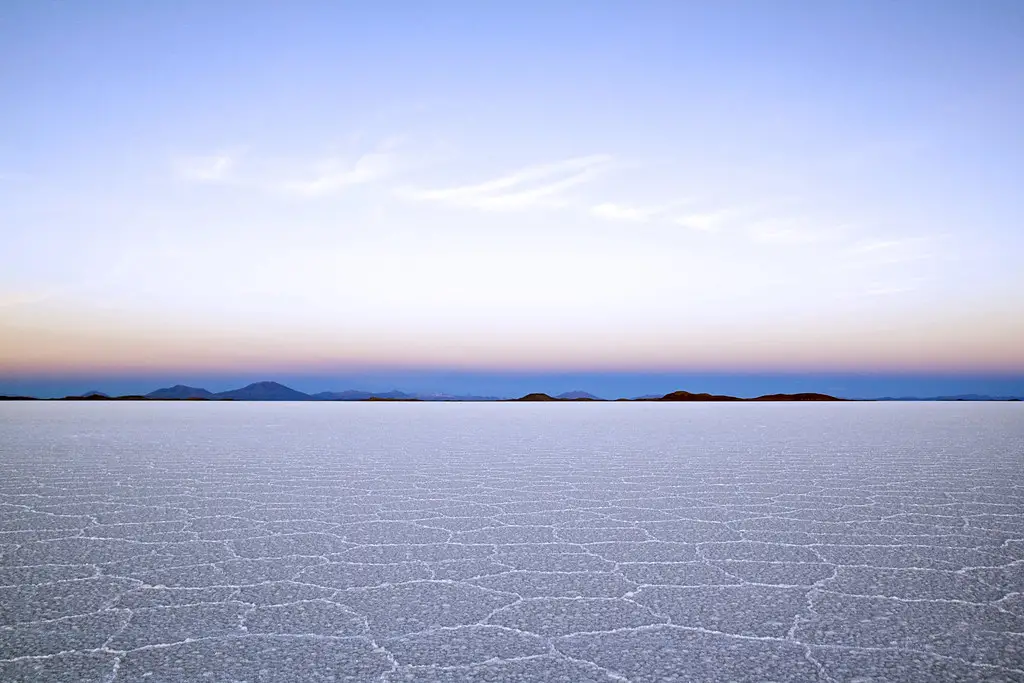
Imagine standing on a mirror that stretches endlessly into the horizon, reflecting the boundless sky above. This breathtaking phenomenon is Salar de Uyuni, the world’s largest salt flat, formed from prehistoric lakes that evaporated thousands of years ago. During the rainy season, a thin layer of water transforms this vast expanse into a surreal, dreamlike reflection of the heavens. The horizon disappears, and the line between earth and sky blurs, creating a magical illusion of infinite space. Despite its extraordinary beauty, Salar de Uyuni remains largely untouched by human development, save for a few small-scale salt-mining operations. The area is also a vital ecosystem for wildlife, particularly the striking pink flamingos that thrive here. These elegant birds add a splash of life and color to an otherwise stark, white landscape. Beyond them, there’s little else—just silence, serenity, and endless space. No billboards interrupt the view, no skyscrapers reach for the sky; it’s Earth as it might have looked before the age of humanity. The sense of isolation is profound, offering a rare glimpse into a world untouched by time. In its stillness, Salar de Uyuni becomes a place of reflection—not just of the sky, but of our place in nature.
2. The Amazon Rainforest, Brazil
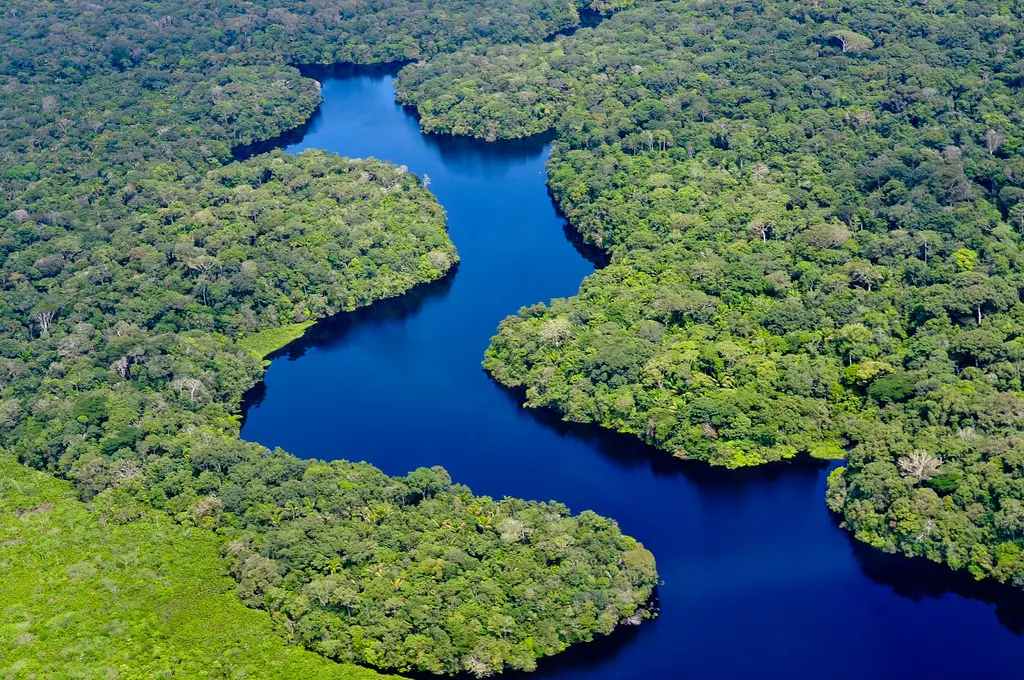
Yes, humans have logged, burned, and explored parts of the Amazon, yet it remains an untamed and vast wilderness, shrouded in mystery. This dense and expansive rainforest stretches across millions of square miles, harboring secrets we’ve barely begun to uncover. It’s so rich in biodiversity that countless species, some perhaps unknown to science, thrive here in hidden corners. Indigenous tribes, many of them uncontacted, have called this place home for generations, living in harmony with nature and preserving their ancient ways of life. Step inside the Amazon, and you’re instantly enveloped by a symphony of sound — the vibrant calls of birds, the hum of insects, and the gentle rustle of leaves in the breeze. Every step feels like an adventure, a reminder of how little we truly know about this green world. Despite centuries of exploration and modern technology, the Amazon retains its mystique, standing as a testament to the raw power and resilience of nature. Its towering trees form a living cathedral, while its rivers pulse like veins through the heart of the forest. It’s humbling to think that even with all our advancements, we’ve barely scratched the surface of its depths. In this vast expanse, the Amazon offers not only life but also a profound sense of awe and wonder.
3. Gangkhar Puensum, Bhutan
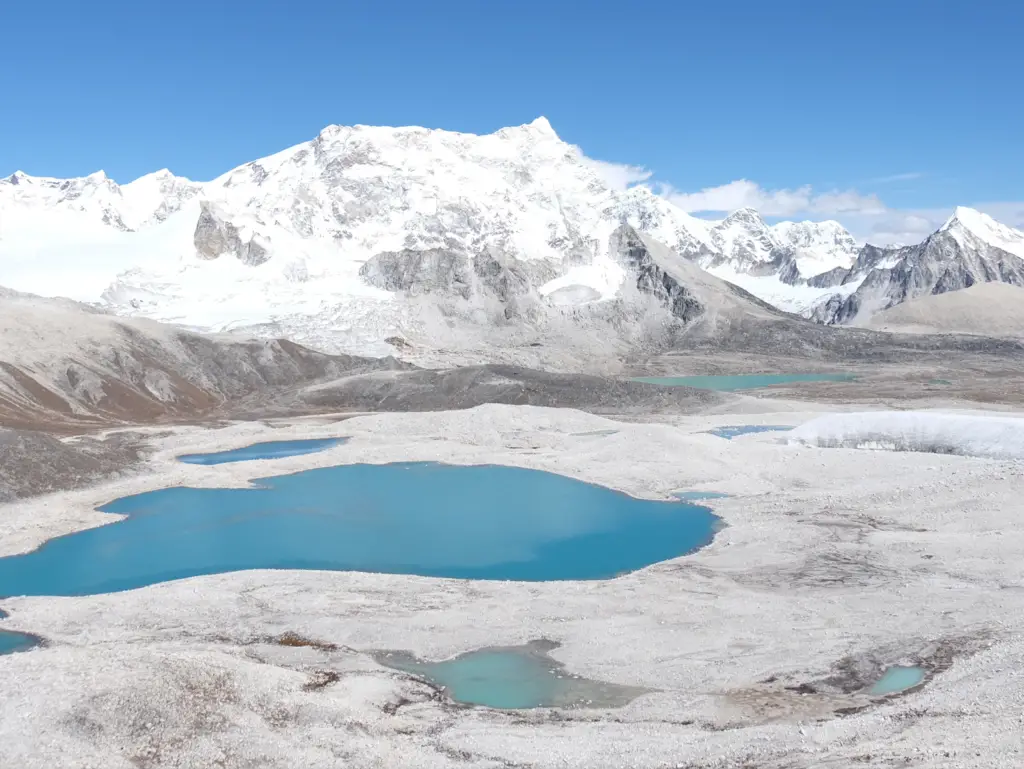
The world’s tallest unclimbed mountain, Gangkhar Puensum, stands as a sacred sentinel in Bhutan, its peaks untouched by human footsteps. Rising to an awe-inspiring 24,836 feet, it dominates the Himalayan wilderness, a striking monument to nature’s untouched majesty. Its name, meaning “White Peak of the Three Spiritual Brothers,” reflects its deep cultural and spiritual significance to the Bhutanese people. Climbing it is strictly forbidden, preserving its sanctity and ensuring that this sacred mountain remains unmarred by human ambition. Despite attempts by expeditions to map it, much of the surrounding area remains a blank spot on modern charts, adding to its mystique. The mountain’s rugged slopes and pristine snowscapes are a testament to the enduring power of the natural world. Here, the divine and the natural merge seamlessly, creating a place where reverence for nature takes precedence over conquest. Unlike other peaks dotted with crampons and base camps, Gangkhar Puensum remains untouched, embodying the idea that some places are meant to be left as they are. Its untouched beauty is a reminder of the balance between human exploration and respect for sacred spaces. Standing before it, one can’t help but feel a sense of awe for this magnificent and unspoiled monument to both nature and spirituality.
4. Tsingy de Bemaraha, Madagascar
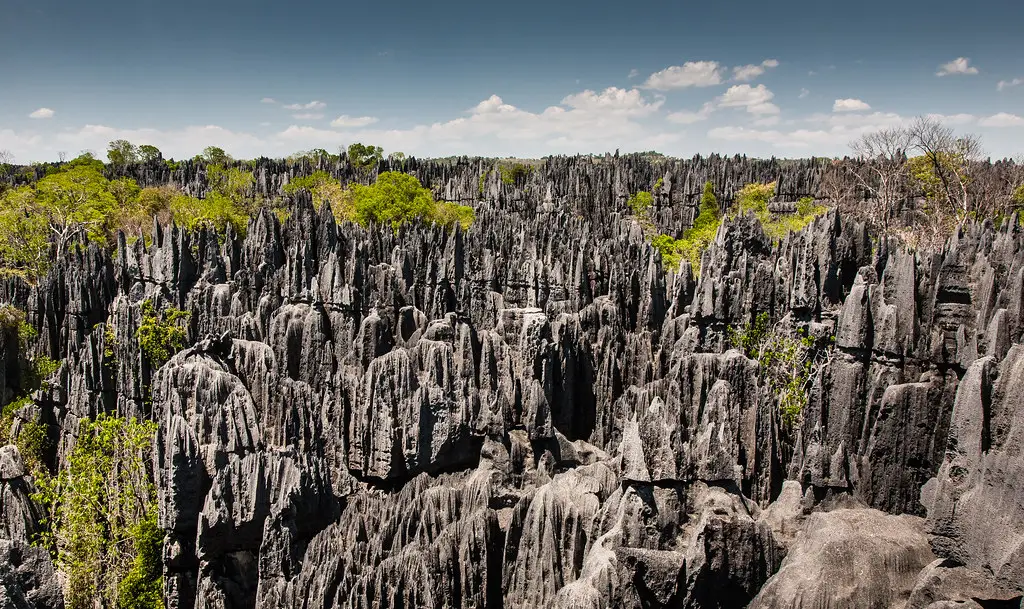
This “forest” of sharp limestone formations seems to belong to another world, as though lifted straight from the pages of a fantasy novel. Known as the Tsingy, its name translates to “where one cannot walk barefoot,” an apt description of its jagged, forbidding terrain. These needle-like peaks create a landscape so rugged and impassable that much of it remains untouched by humans. As a result, the Tsingy serves as a sanctuary for unique wildlife, including tiny lemurs, vibrant chameleons, and rare birds that flourish in its isolated ecosystems. Exploring this otherworldly terrain feels like stepping into a natural cathedral, where towering limestone spires stretch skyward like pillars of stone. The interplay of light and shadow among the formations creates an ethereal, almost sacred atmosphere. Beneath its surface, hidden caves and underground rivers carve through the limestone, adding to the Tsingy’s enigmatic charm. This untouched wilderness is a testament to nature’s power and artistry, preserving a delicate balance of life in a seemingly inhospitable place. Walking here, one feels a profound sense of wonder, as if stepping into a realm that exists beyond time and human reach.
5. The Mariana Trench, Pacific Ocean
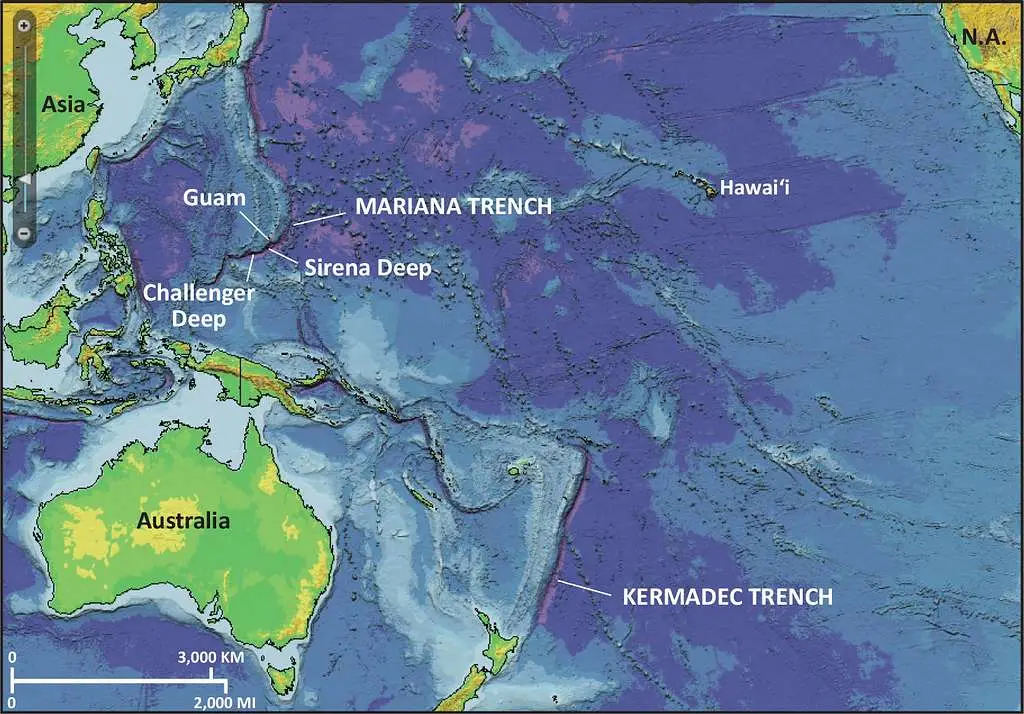
We know more about the surface of Mars than we do about the Mariana Trench, the deepest, most mysterious part of Earth’s oceans. Situated nearly 36,000 feet below sea level, this vast underwater canyon is a world of crushing pressure and eternal darkness. The trench remains largely unexplored, with only a handful of humans daring to venture into its depths. For those who have, they’ve uncovered a strange and surreal world, populated by creatures that look as though they belong in a science fiction movie. These bizarre life forms have adapted to the extreme conditions of the trench, surviving in an environment so hostile that it seems almost otherworldly. Despite modern technology, much of the trench remains hidden from us, a reminder of the profound mysteries that still lie beneath the ocean’s surface. It’s a place where the unknown reigns, far from the reach of our everyday lives. The Mariana Trench serves as a humbling reminder that even on our own planet, there are vast and unexplored realms that continue to elude our understanding. Its silence and darkness hold secrets that, like the deepest parts of space, remain tantalizingly out of reach. Exploring it is not just an adventure—it’s a journey into the very heart of Earth’s enduring enigma.
6. Namib Desert, Namibia
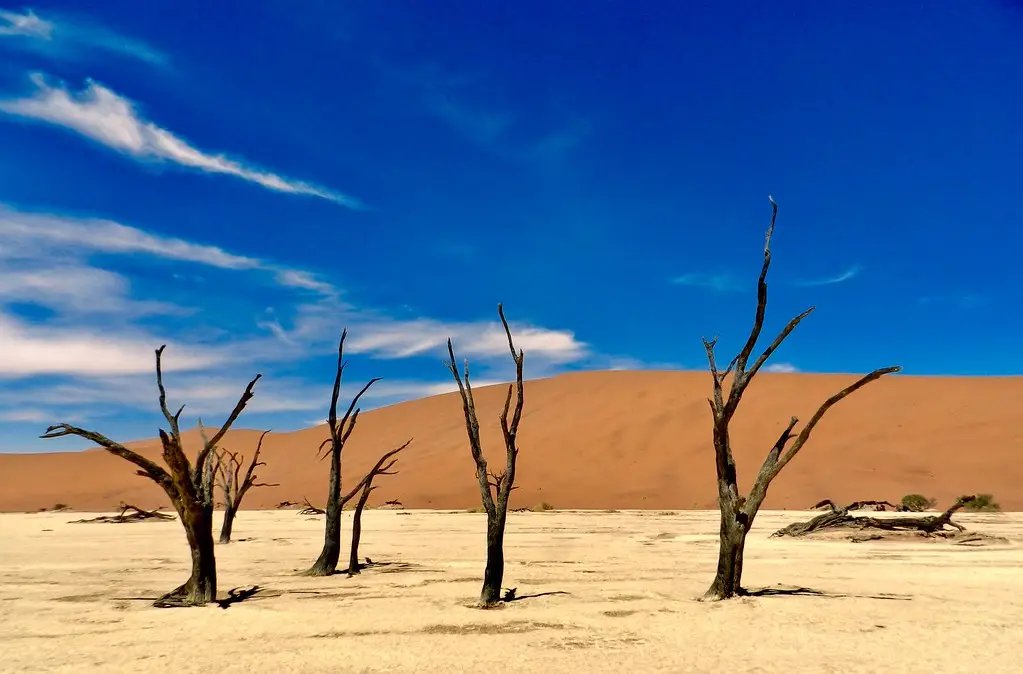
One of the world’s oldest deserts, the Namib stretches for over 1,200 miles along Africa’s southwestern coast, a vast expanse of arid land where time seems to stand still. Its towering dunes, some of the tallest on Earth, shift and shimmer beneath the harsh desert sun, creating an ever-changing landscape that seems both alien and beautiful. The desert’s extremes may seem inhospitable, yet it teems with life, from beetles that survive by drinking fog to the majestic desert-adapted elephants that roam its edges. These resilient creatures have found ways to thrive in this unforgiving environment, proving that life can persist even in the harshest of places. Despite this, large swathes of the Namib remain unexplored, their secrets hidden beneath the sands and dunes. The sheer scale and isolation of the desert make it feel like a place untouched by modern civilization, where human presence is fleeting and insignificant. Here, the silence is so profound that it almost feels deafening, as if the desert itself is holding its breath. The stillness and solitude offer a rare opportunity to experience the pure, unspoiled beauty of nature in its most extreme form. It’s a place where the passage of time is measured not by the clock, but by the slow, imperceptible shifts of the dunes. The Namib is a testament to nature’s quiet resilience, a place of both stark beauty and profound mystery.
7. Papua Rainforest, Indonesia
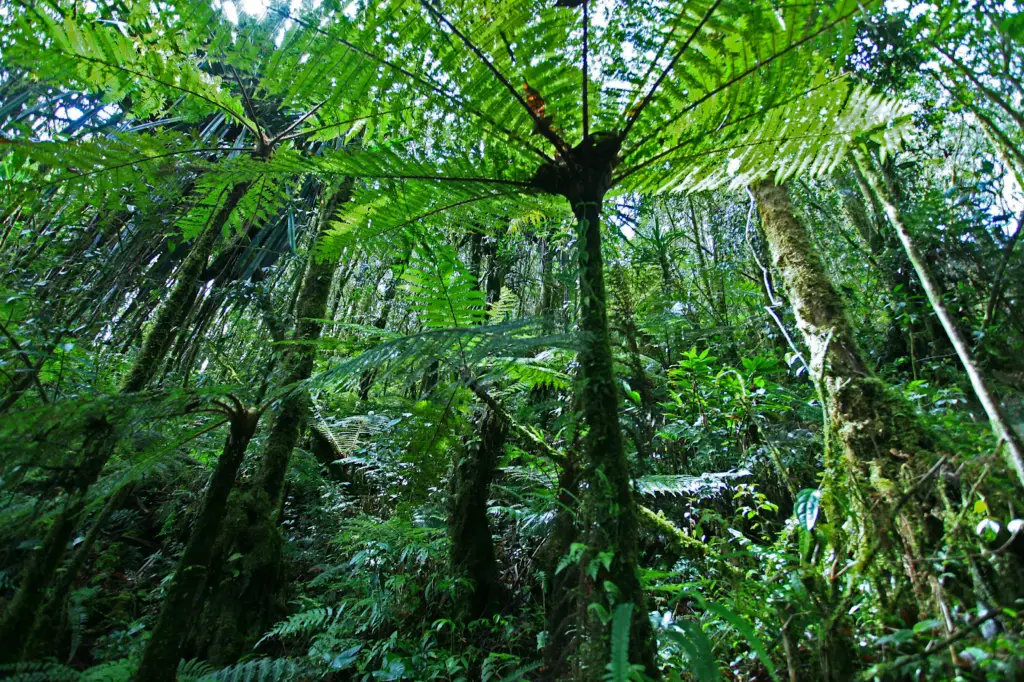
Tucked away on the island of New Guinea, this dense jungle is one of the least explored and most mysterious places on the planet. Its thick canopy and rugged terrain make it a challenging environment, one that few have ventured into. Yet, within its depths lies an astonishing array of life, including some of the world’s most unique species, such as the vibrant birds of paradise with their dazzling, iridescent plumage. These creatures, with their elaborate displays, have become symbols of the jungle’s untouched beauty. Indigenous tribes have inhabited parts of the forest for centuries, living in harmony with the land in ways that have remained largely unchanged over time. Their presence adds a profound cultural depth to the already rich natural landscape. For outsiders, navigating this forest is no easy feat. The thick undergrowth, steep hills, and winding rivers form a green labyrinth that challenges even the most seasoned explorers. It is a place that guards its secrets fiercely, revealing only what it chooses to those who enter. The jungle’s isolation and untamed beauty have preserved it as one of the last frontiers of Earth’s wild places, a testament to nature’s power to remain hidden and mysterious, even in our modern world.
8. Antarctica’s Dry Valleys
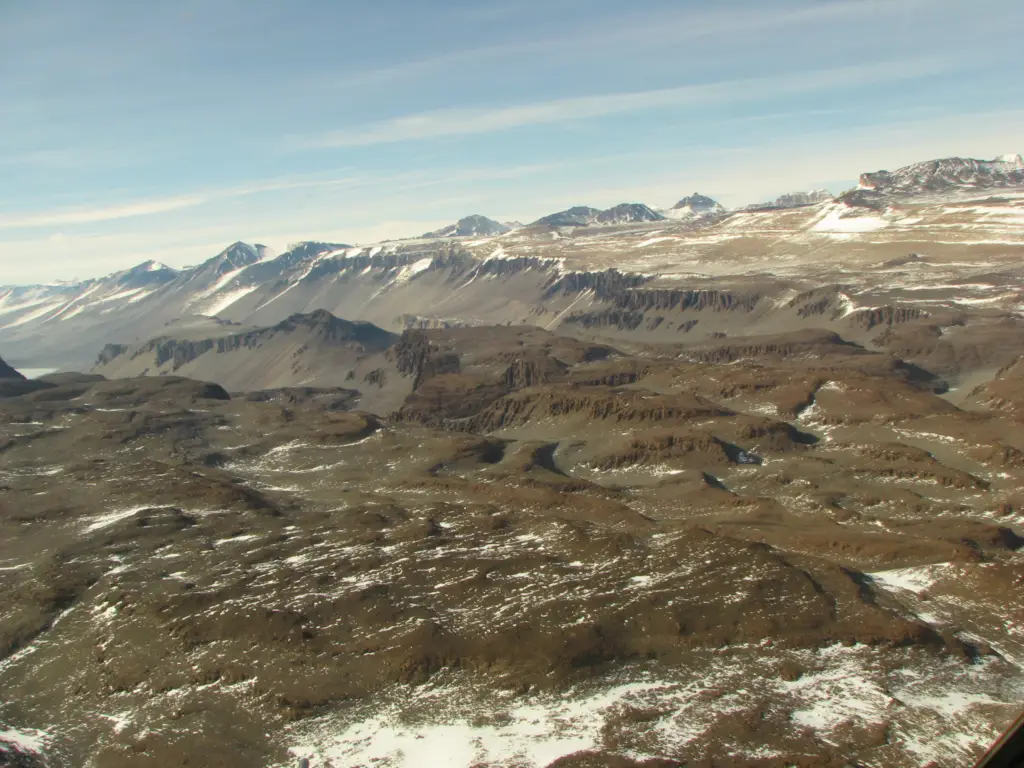
The McMurdo Dry Valleys are one of the most extreme and untouched places on Earth, a vast expanse of barren, wind-swept terrain where life struggles to take hold. These valleys are almost entirely devoid of snow and ice, making them stand out in stark contrast to the rest of the frozen continent. The harsh climate and extreme cold, combined with nearly constant winds, create an environment so inhospitable that even microorganisms are scarce. Despite being one of the most remote locations on the planet, the Dry Valleys remain remarkably pristine, largely untouched by human activity. The absence of precipitation and the presence of unique mineral deposits make this area one of the driest places on Earth, where human footprints are rare and fleeting. The only signs of human presence are the occasional scientific expeditions, which come to study the region’s extreme conditions and the rare microbial life that clings to survival in the harsh environment. These scientists, however, leave little more than temporary footprints in the snow, ensuring that the land remains largely unspoiled. The Dry Valleys are a living testament to Earth’s raw, untamed beauty, where nature’s forces remain undisturbed by the influence of civilization. In this remote sanctuary, the landscape appears almost frozen in time, a place where Earth’s ancient secrets are preserved beneath the surface. The isolation of the Dry Valleys ensures that they continue to be a place where few have ventured, leaving the region’s mysteries largely untouched by human hands.
9. Sundarbans Mangrove Forest, India and Bangladesh
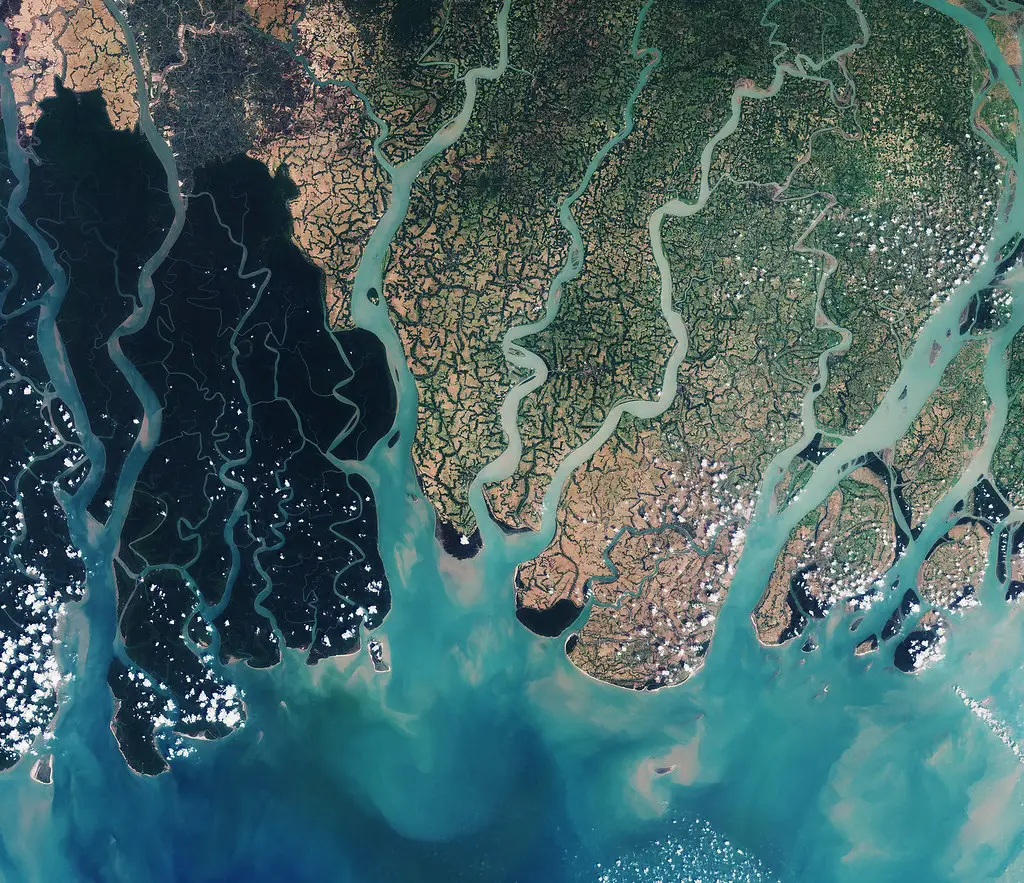
The Sundarbans, a UNESCO World Heritage Site, is the largest tidal halophytic mangrove forest in the world, sprawling across vast stretches of land and water. This unique ecosystem is home to a variety of incredible creatures, including tigers that swim through the waterways, and crocodiles and dolphins that inhabit the rivers and estuaries. Despite being in close proximity to human settlements, large portions of the Sundarbans remain largely inaccessible. Its dense network of mangroves, tangled roots, and shifting tides create a natural fortress, making it difficult for humans to penetrate and disrupting efforts to encroach upon its boundaries. This inaccessibility has helped protect the fragile ecosystems within, allowing wildlife to thrive in relative isolation. The forest’s labyrinthine waterways and thick vegetation provide refuge to a variety of species, making it one of the most biodiverse regions on Earth. The Sundarbans’ beauty and mystery are enhanced by its sense of remoteness, a place where nature’s raw power is on full display. While humans can observe from the edges, the core of this wilderness remains untouched, preserving its ecological balance and its role as a vital sanctuary for wildlife. The Sundarbans stand as both a wonder and a reminder of nature’s resilience, safeguarding its treasures from the encroaching hand of civilization.
10. Kamchatka Peninsula, Russia
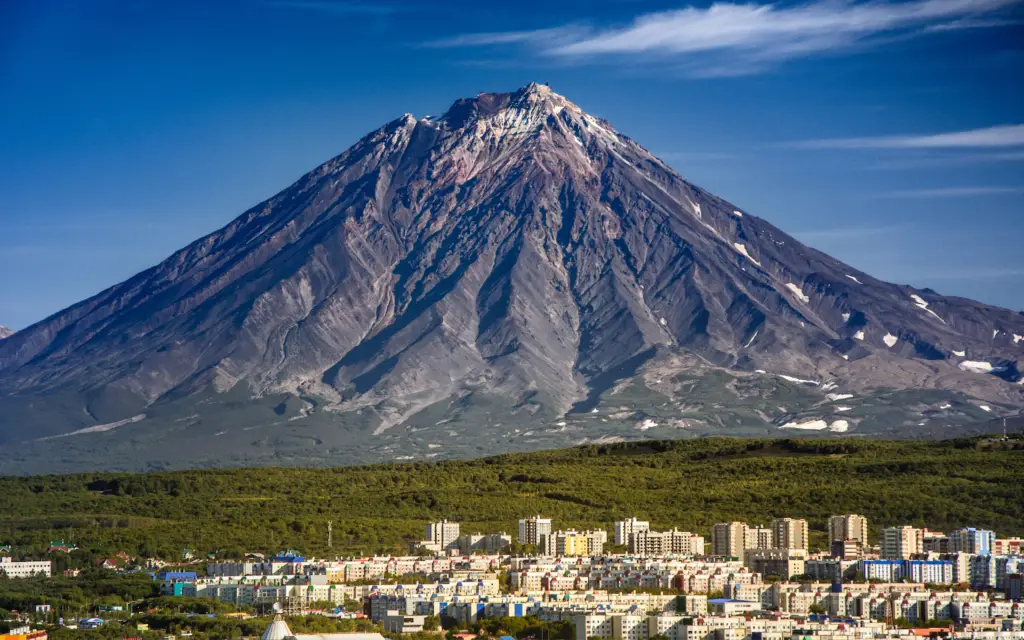
This remote peninsula, Kamchatka, is a land of fire and ice, where the forces of nature are in constant motion. With over 300 volcanoes, many of them still active, the landscape is marked by the unmistakable presence of molten earth, steaming geysers, and bubbling hot springs. Untamed rivers weave through this rugged terrain, carving their paths through the volcanic rock and lush forests. Kamchatka’s isolated beauty has preserved its wild character; even today, the region is accessible mainly by air or sea, making it one of the most remote places on Earth. The area is a sanctuary for wildlife, with brown bears and an abundance of salmon thriving in its pristine rivers and forests, largely undisturbed by human activity. Kamchatka offers a rare glimpse into a world where nature’s raw power is on full display, from the rumble of erupting volcanoes to the explosive force of the geysers. The vast wilderness of this peninsula remains unspoiled, an untouched corner of the planet where life exists in harmony with the powerful elements of fire and ice. Here, the Earth’s dynamic forces are not tempered by civilization, and the landscape offers a profound reminder of the raw, unfiltered beauty of nature. Kamchatka stands as a testament to the enduring power and majesty of the natural world, a place where the wild and untamed still rule.
11. Fiordland National Park, New Zealand
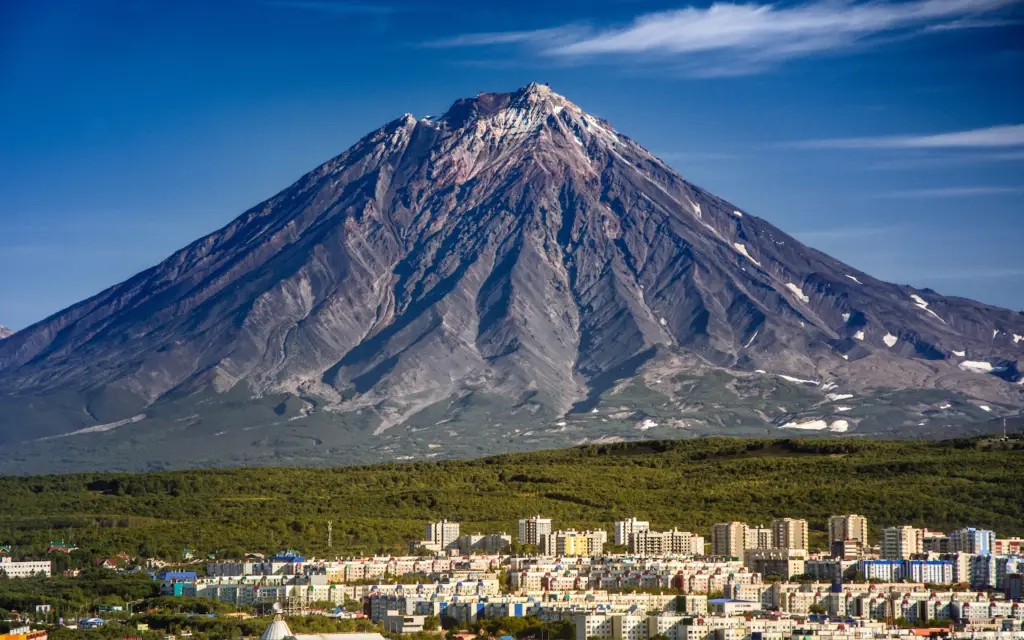
Nestled in the southwest corner of New Zealand, Fiordland National Park feels like stepping into another world, a pristine wilderness untouched by time. Towering fjords rise sharply from the sea, their rugged cliffs carved by glaciers over millions of years. Cascading waterfalls tumble down the sides of these dramatic landscapes, their waters shimmering in the light. Vast, untouched forests stretch as far as the eye can see, creating a deep sense of isolation and awe. Some areas of the park are so remote that they have never been set foot on by humans, preserving them in their raw, unspoiled state. This land is home to rare and unique species, such as the flightless takahe bird and the endangered kea parrot, whose vibrant colors stand out against the dark greens and grays of the landscape. The air in Fiordland feels ancient, thick with the scent of moss and earth, as if the very ground is holding its breath. The stillness and quiet here are profound, broken only by the call of native birds or the distant roar of a waterfall. Fiordland is a place where time seems to slow down, offering a rare glimpse into a world that has remained largely unchanged for millennia. It’s a sanctuary for both nature and the soul, a place that evokes a deep connection to the Earth’s primordial past.
12. The Congo Basin, Africa
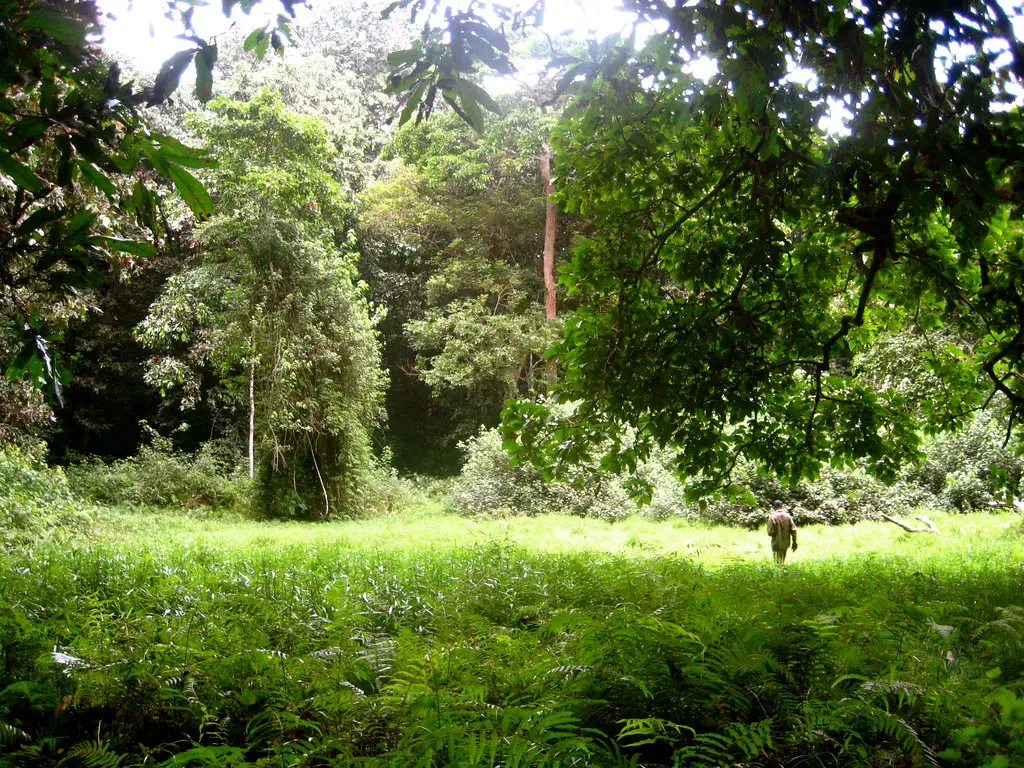
The Congo Basin, the world’s second-largest rainforest, remains one of the least explored and most enigmatic places on Earth. Spanning six countries, this dense jungle is a vast and untamed wilderness, home to a remarkable array of wildlife, from the elusive bonobos to the forest elephants that roam its depths. The region’s inaccessibility has allowed much of it to remain untouched by human hands, preserving its ecosystems in a natural state. It’s a place where nature’s rule is absolute, and the intricate balance of life continues as it has for millennia. The Congo Basin’s remoteness and rugged terrain make it a haven for species that exist nowhere else on Earth, adapting to an environment that is both challenging and abundant. Scientists believe that this hidden world could hold answers to countless ecological mysteries, from the secrets of its unique flora and fauna to the complex interrelationships within its ecosystems. In this living, breathing rainforest, the rhythms of nature are uninterrupted, and its ancient trees stand as silent witnesses to the passage of time. The Congo Basin is a testament to the resilience of life in its most primal form, a place where nature’s mysteries remain just beyond our reach, waiting to be uncovered.


